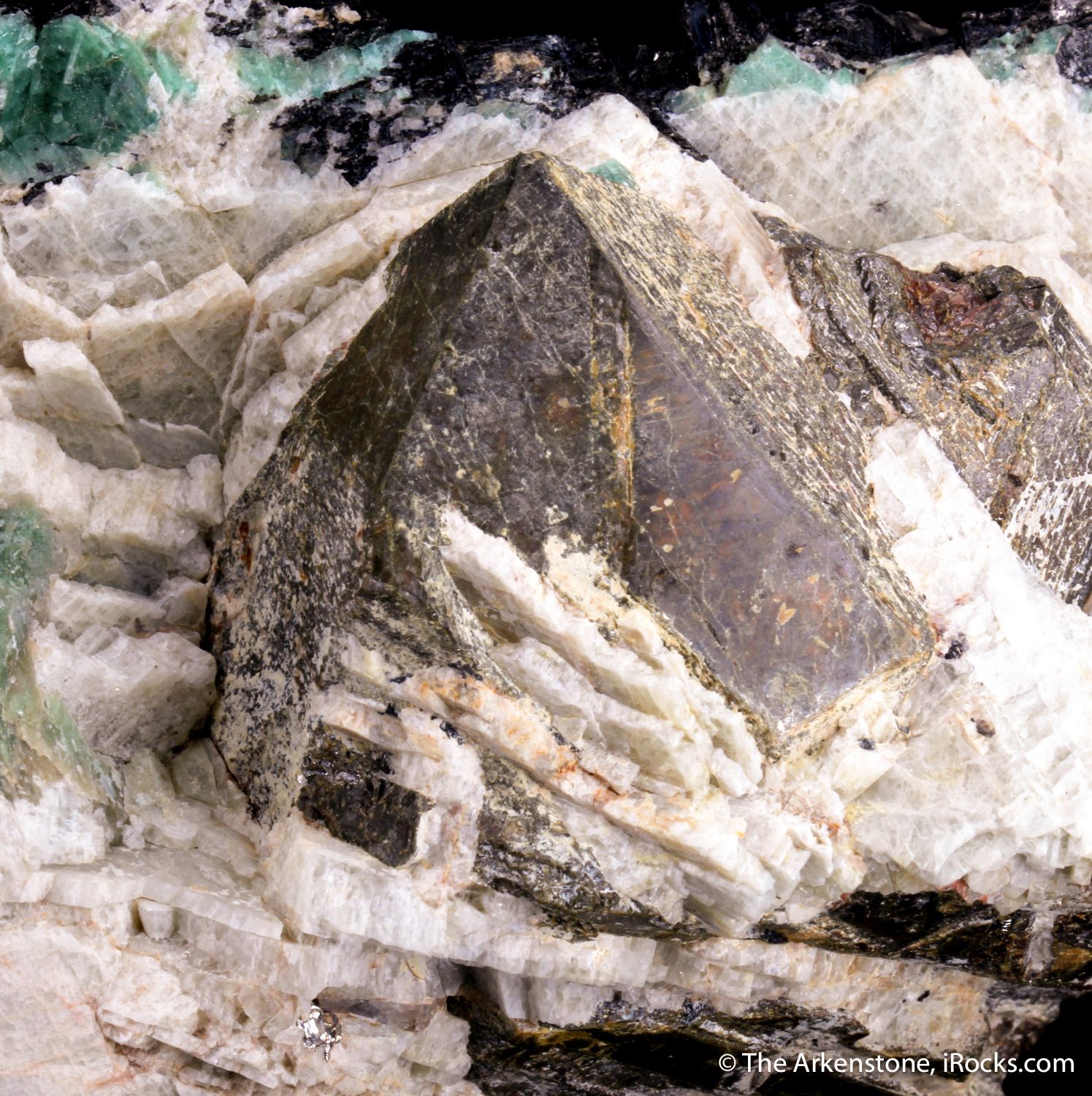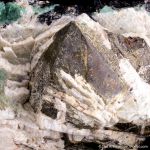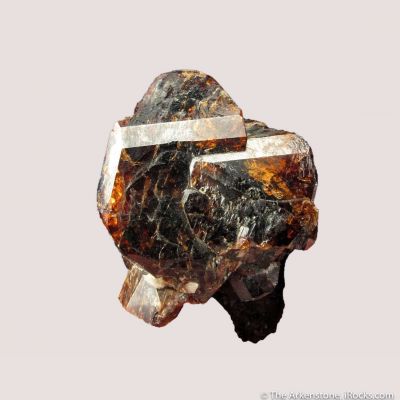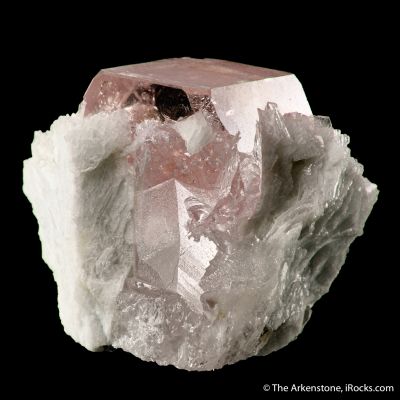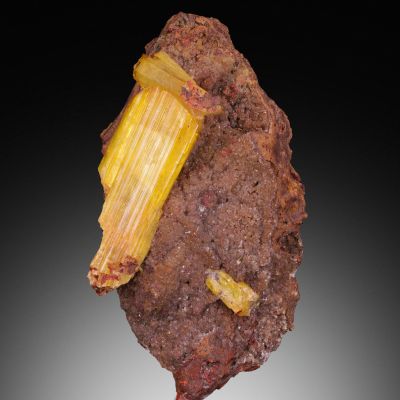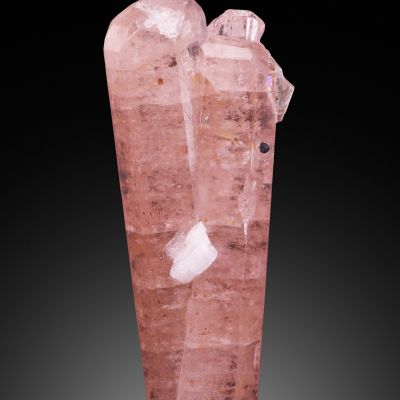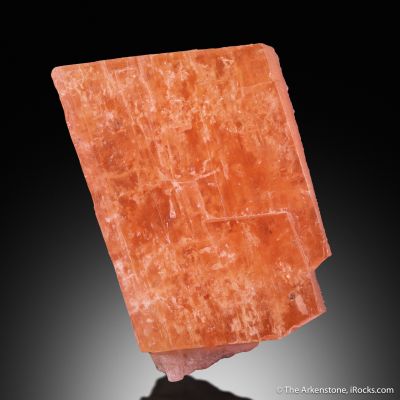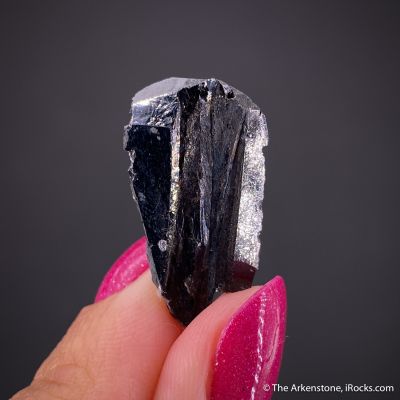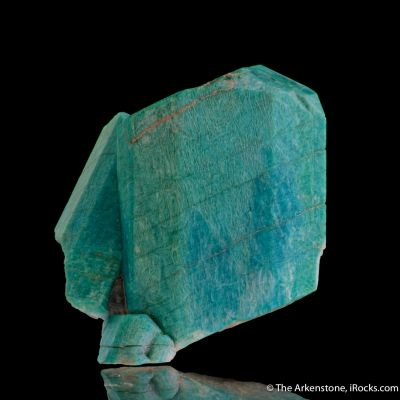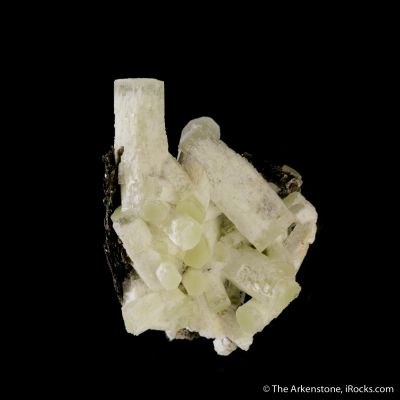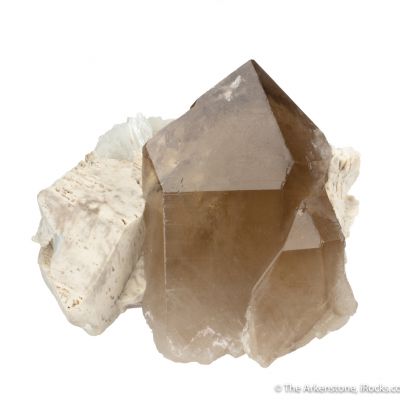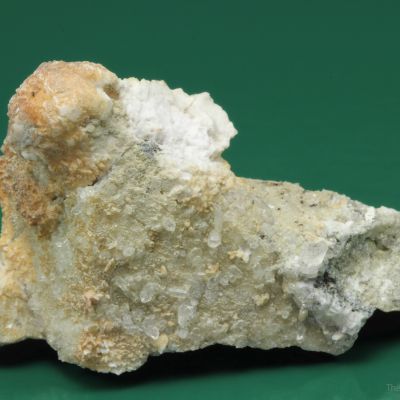- UTR23-17
- Microlite (Plumbian) with Albite, Amazonite and Biotite
- Ploskaya Mt, Western Keivy Massif, Keivy Mountains, Lovozersky, Murmansk, Russia
- Cabinet, 11.9 x 7.5 x 7.0 cm
- Ex. Bill & Anne Cook
- $3,500.00 Payment Plan Available
What an interesting combination specimen from the little heard of Western Keivy Massif alkaline complex! Other alkaline complexes on the Kola Peninsula take prominence for their specimens and variety of species like the Khibina and Lovozero alkaline massifs. This piece shows some of the diversity from the Keivy Massif with a shockingly large Plumbomicrolite crystal associated with Albite, Amazonite and Biotite. This is a colorful piece with the big, 4 cm, olive green Microlite surrounded by thick blades of ivory colored Albite, large, bright green, chunky, anhedral Amazonite, and some broad, thin "books" of Biotite on the bottom of the piece. It's a great and unique combination specimen from this alkaline complex especially with the big, well-formed, octahedral Plumbomicrolite, as it's labeled, which dominates the right side of the piece set in the contrasting, criss-crossing, off-white Albite and balanced by the bright green Amazonite on the other side of the piece. The bronze-brown Biotite on the bottom adds a nice touch. This piece is from Bill and Anne Cook collection with their label along with a Cureton Mineral Company label (Forest Cureton was famous for exactitude in analysis and analyzed his own specimens carefully, by the way); and a Mineralogical Record label indicating that it was a figured specimen in 1984 (MR volume 15, #1, page 46, figure 8). There is apparently some disagreement still among mineralogists as to how to classify this material, as a plumbian microlite, or as its own species. You can google and still not get a clear answer, as well as some broken links to old discussions. Per MINDAT.org: Safiannikoff & Van Wambeke (1961) described a lead-rich microlite from an alluvial Sn deposit in Kivu, Congo (Mumba cassiterite gravels) and named it (in French) as plumbomicrolite. They did not, however, propose a formal name for a plumboan member of the microlite-pyrochlore family. Later Hey (1964) introduced the name plumbomicrolite, based upon its use in literature.

